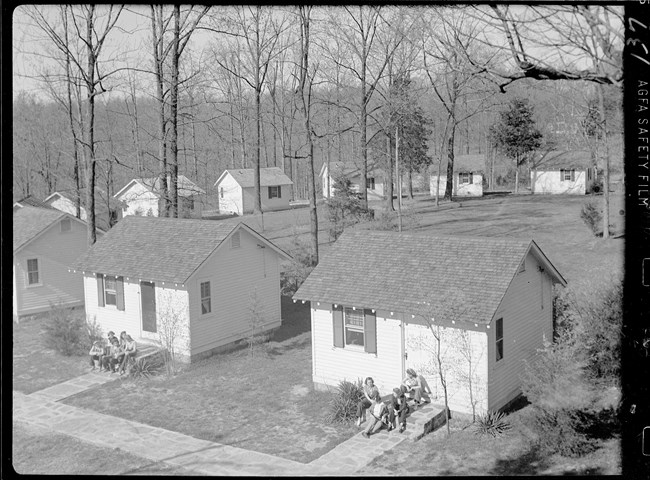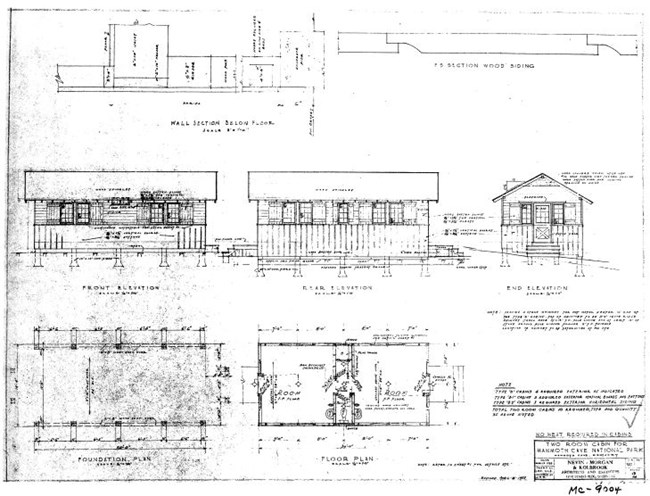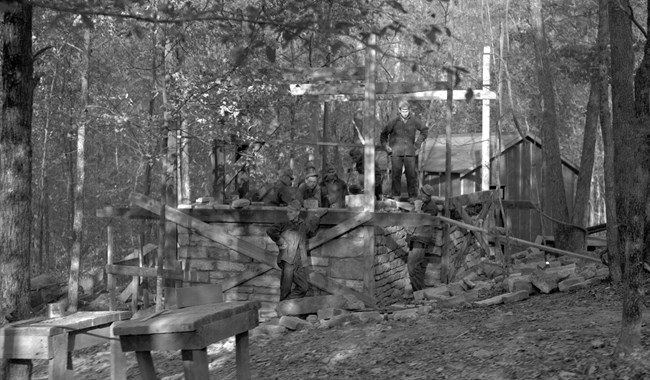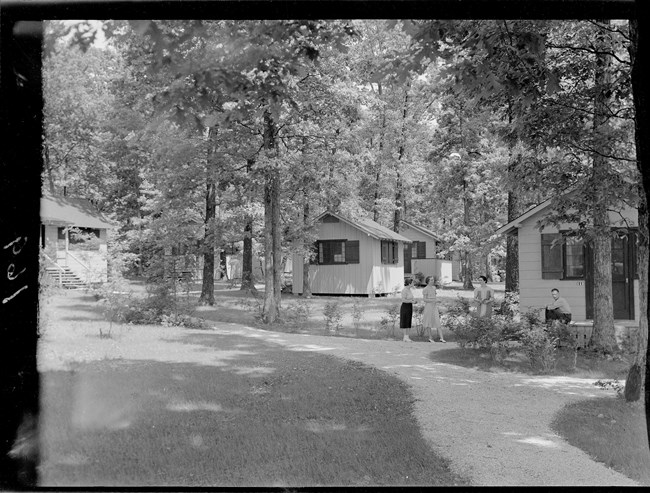
NPS Photo The buildings of Mammoth Cave National Park have a history of their own. Some of the most iconic buildings of the park are also older than the park, itself. Before its establishment in 1941, Mammoth Cave National Park was being prepared for the public with construction projects that included lodging, workshops, warehouses, utility structures, and comfort stations. 
NPS Photo CCC Design & ArchitectureThe designs of these buildings were inspired by the early 20th century architecture of other national parks. These designs focused on the harmony of materials and form with the surrounding landscape. Materials like hand cut native sandstone and exposed lumber frames on the exterior of the buildings integrated into the surrounding landscape. Forested ridgelines and exposed sandstone and limestone bluffs surround many of these structures today, giving the illusion that these buildings could have grown out of the ground or formed directly from the rocky outcrops. 
NPS Photo But these buildings came from the hands of many laborers, some of them young and strong, and others well-experienced experts in their craft. Many of the young men came to work in the park as part of the Civilian Conservation Corps (CCC), a work relief program of the 1930s. Local craftsmen skilled in stone, lumber, and concrete, completed many of the skilled labor and all of these men were aided by early park support organizations like the Mammoth Cave National Park Association. The work included harvesting the stone from local quarries and sawmills that have now been abandoned. 
NPS Photo How to Find CCC Structures in the ParkIf you head to the visitor center area, you can stay at the historic Woodland Cabins or Deluxe Cottages. The picnic area north of the visitor center has the Earth House, with its environmental education classroom. When originally constructed the building operated as a bathhouse for the former campground. Or head out into the park, where you can see some of the historic pump houses that were important for supplying water to the early park facilities. A great example is the historic Three Springs Pumphouse, located off of Flint Ridge Road. A long stone wall protects the approaching road, as you walk this picturesque area. If you walk along the Two Springs Trail or River Valley Trail, you may see the Chlorinator House, a stone structure built for early 20th century water treatment. |
Last updated: August 23, 2023
